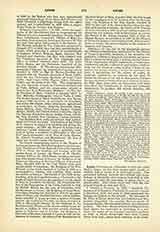

Lycopolis, a titular see in Thebais Prima, suffragan of Antinoë. As Siout or Siaout it played a minor rôle in Egyptian history. After the fall of the sixth dynasty, its princes, freed from the supremacy of Memphis, bore alternately the yoke of the kings of Heracleopolis or Thebes. The principal object of worship was the jackal Apouaitou, whence the Greek Lycopolis, or city of the wolf. It subsequently became the capital of the Principality of Terebinthos, and later of the nome of that name. Among the ancient bishops of Lycopolis (Lequien, “Oriens Christianus”, II, 597) were Alexander, author of a treatise against the Manichaeans; Meletius, author of the (Egyptian) Meletian schism, and opponent of Peter of Alexandria; Volusianus, who attended the Council of Nicaea in 325, and others. It is now the see of a Coptic schismatic bishop. Theodosius the Great threatened to destroy the town after a fratricidal war, and it was saved only by the intervention of St. John of Lycopolis, one of its most celebrated citizens. Plotinus, the third-century neo-Platonic philosopher, was born at Siout. Under the Arabs the town was very prosperous, became the capital of Said, and the rendezvous of caravans for Darfur. It also possessed a flourishing slave market. Today it is the capital of a province, numbers 40,000 inhabitants, a few of whom are Catholics, and is chiefly noted for its bazaar, its Arabian cemetery, and its ancient necropolis.
S. VAILHE

